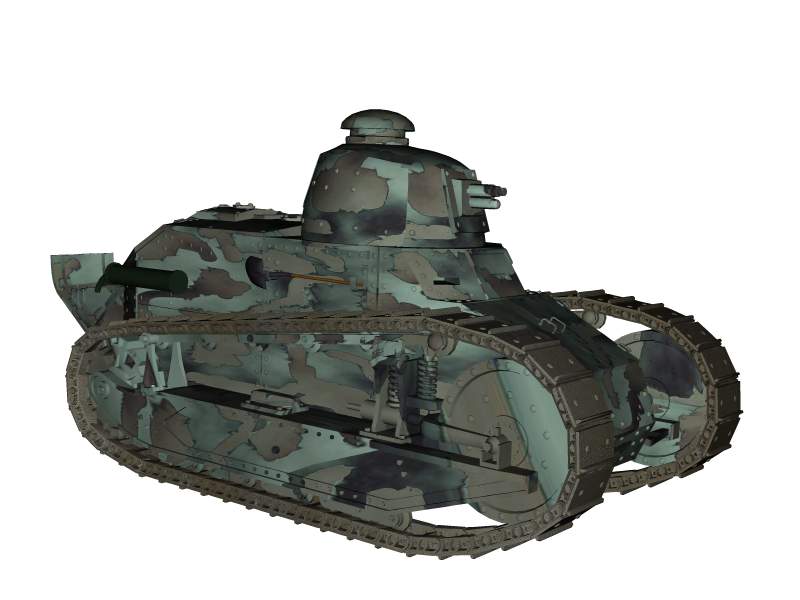Hand grenades of the British Army.
History, development, specifications, statistics and pictures of grenades no. 36M, no. 69, no. 70 and gammon grenade.
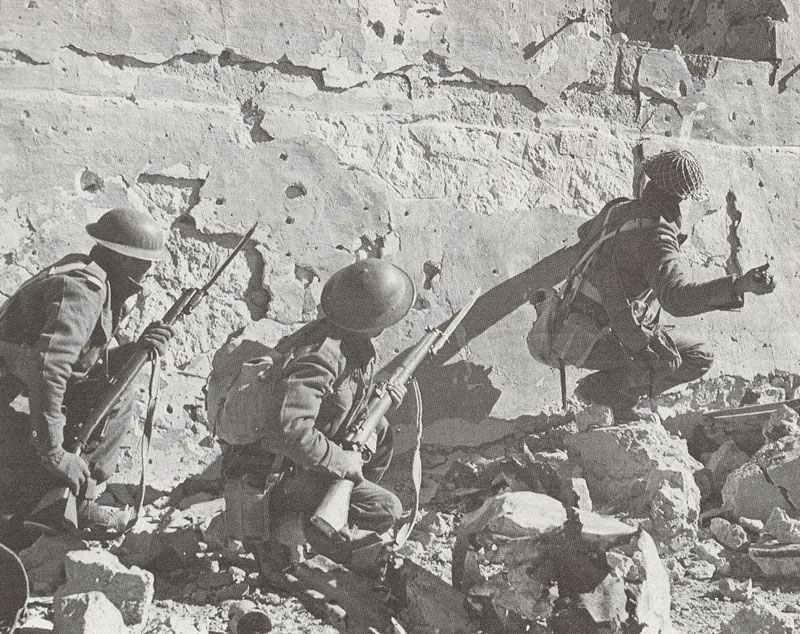
British army grenades no. 36M, no. 69, no. 70 and gammon
Table of Contents
British army grenades no. 36M, no. 69, no. 70 and gammon.
Grenade No. 36M
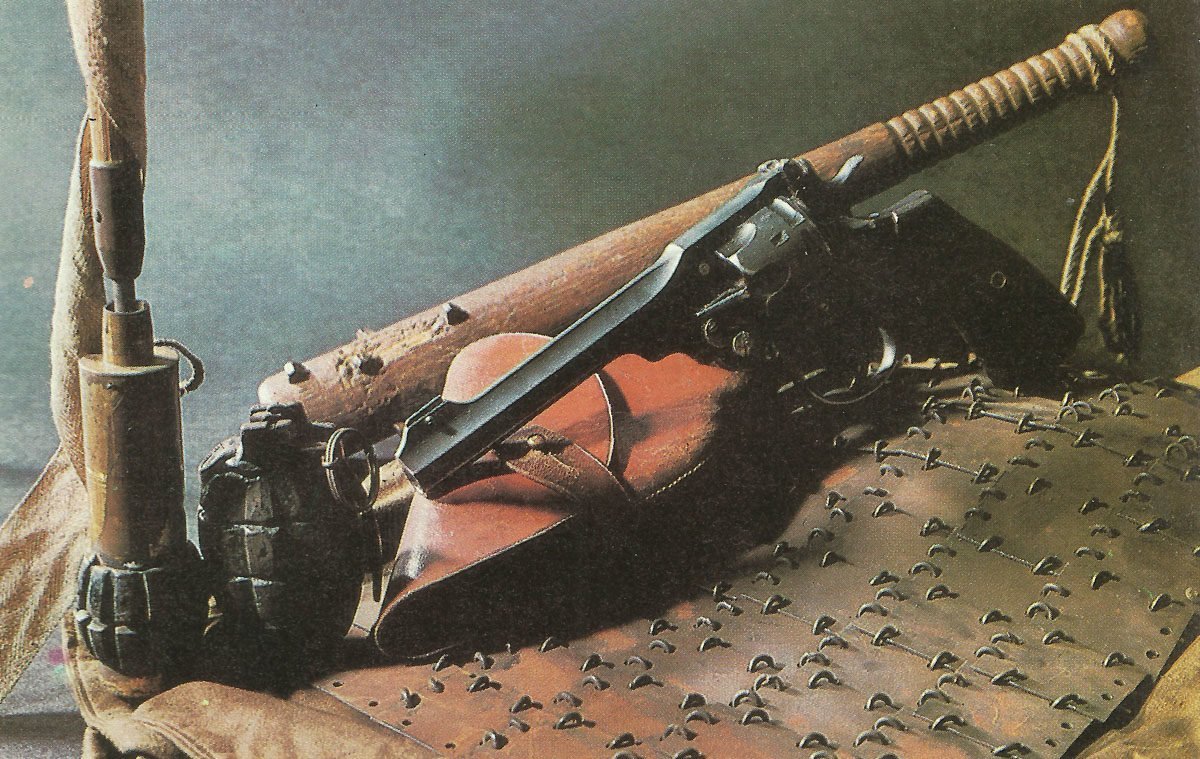
Grenade No. 36M
Type: hand or rifle grenade.
History
The 36M grenade, also called the ‘Mills Bomb’ by the British Tommy’s after its inventor, has a long and eventful history.
This began in 1915 as grenade no. 5, was then fitted with a tail bar to be fired from a rifle and was given the new name grenade no. 23.
In 1918, it was given a 2.5 inch (6.35 cm) thick, removable base plate made of tin to be fired from a rifle grenade device and was renumbered No. 36. Shortly after, a number were made specially waterproof to be used in Mesopotamia and renumbered No. 36M.
The production of grenades No. 5 and No. 23 was stopped in 1918, while No. 36 was declared obsolete in 1932. Thus, No. 36M remained as a standard hand grenade of the British Army.
The mechanism has hardly changed since Mills original patent of May 1915. A central channel holds a firing pin at the top, which is held against the pressure of a spring by a bent lever, which in turn is held securely by a tension pin.
Under the firing pin is a ‘primer’ consisting of a 0.22 inch (56 mm) rim fire cartridge, a short safety fuse and a detonator. This primer set is U-shaped so that the cartridge enters the central channel while the detonator enters an adjacent pocket. The detonator set can be inserted or removed by gripping the curved section of the fuse cord. Once the set is inserted, the grenade is considered ‘primed’ and a base plug is screwed in to hold the primer in place.
The fuse originally burned with a delay of 7 seconds, which was necessary when firing the grenade from a rifle grenade launcher. But in 1940 the British expeditionary force complained that the delay was too long for throwing it by hand, as the Germans were clever enough to pick it up and throw it back.
Therefore, a four-second fuse was immediately developed and issued, which caused a number of unpleasant surprises among the German troops before the news had got around.
Subsequently, the 4-second fuse was retained for use as hand grenades, while the 7-second fuse remained available for use as a rifle grenade.
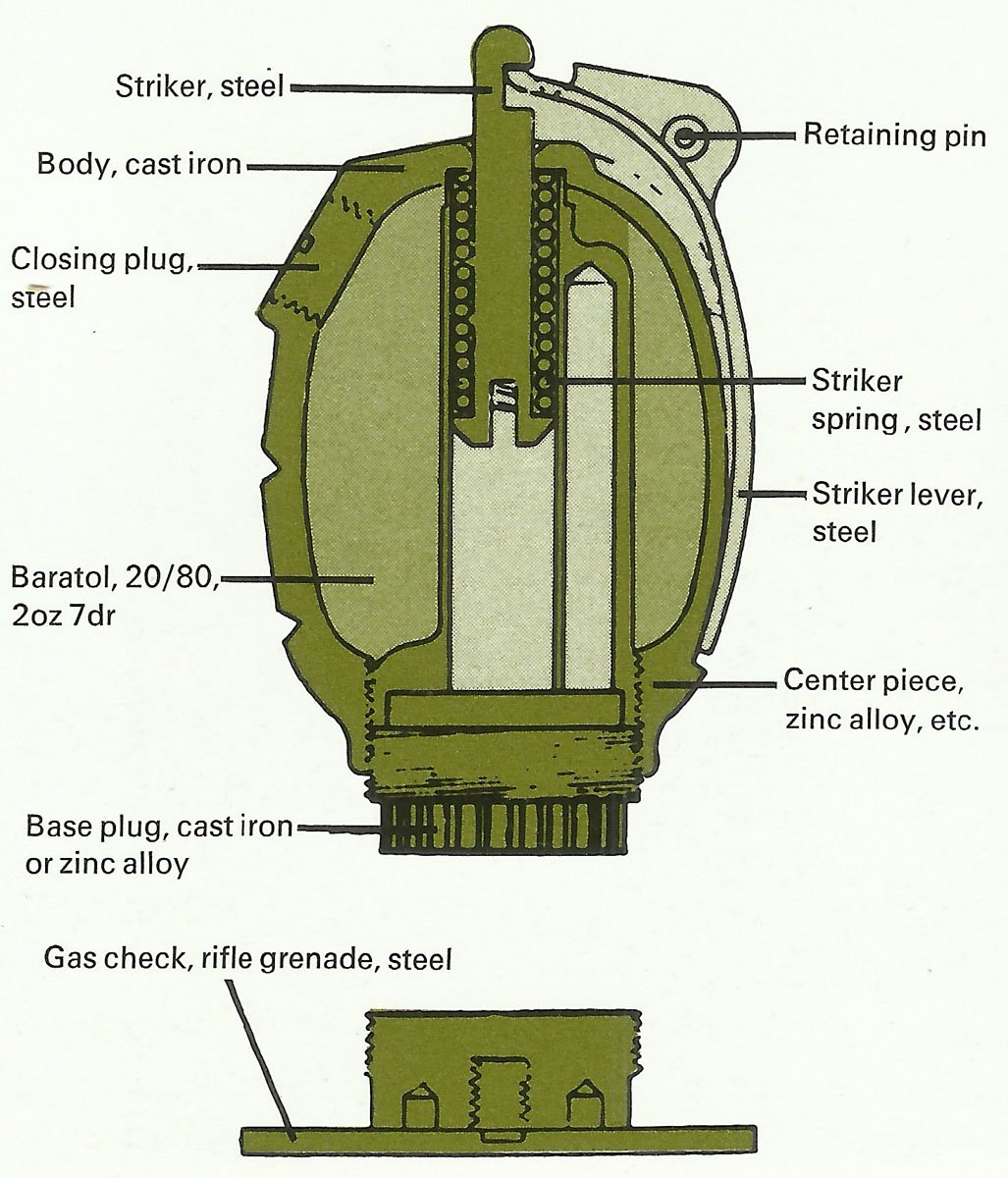
The hand grenade No. 36M was used extensively by the British troops on all theaters of war. It was a hand grenade of ‘defensive’ pattern and fragmentation in the blast could be irregular, often throwing large pieces up to a hundred yards (90 meters) or more away. It was therefore vital for the thrower and his comrade to take cover once he had thrown the grenade.
From time to time, various British military authorities pointed out these and other theoretical shortcomings and tried to design new grenades that would be an improvement. None of them did so subsequently, so that the No. 36M hand grenade in the British Army continued its troop use unperturbed for a long time.
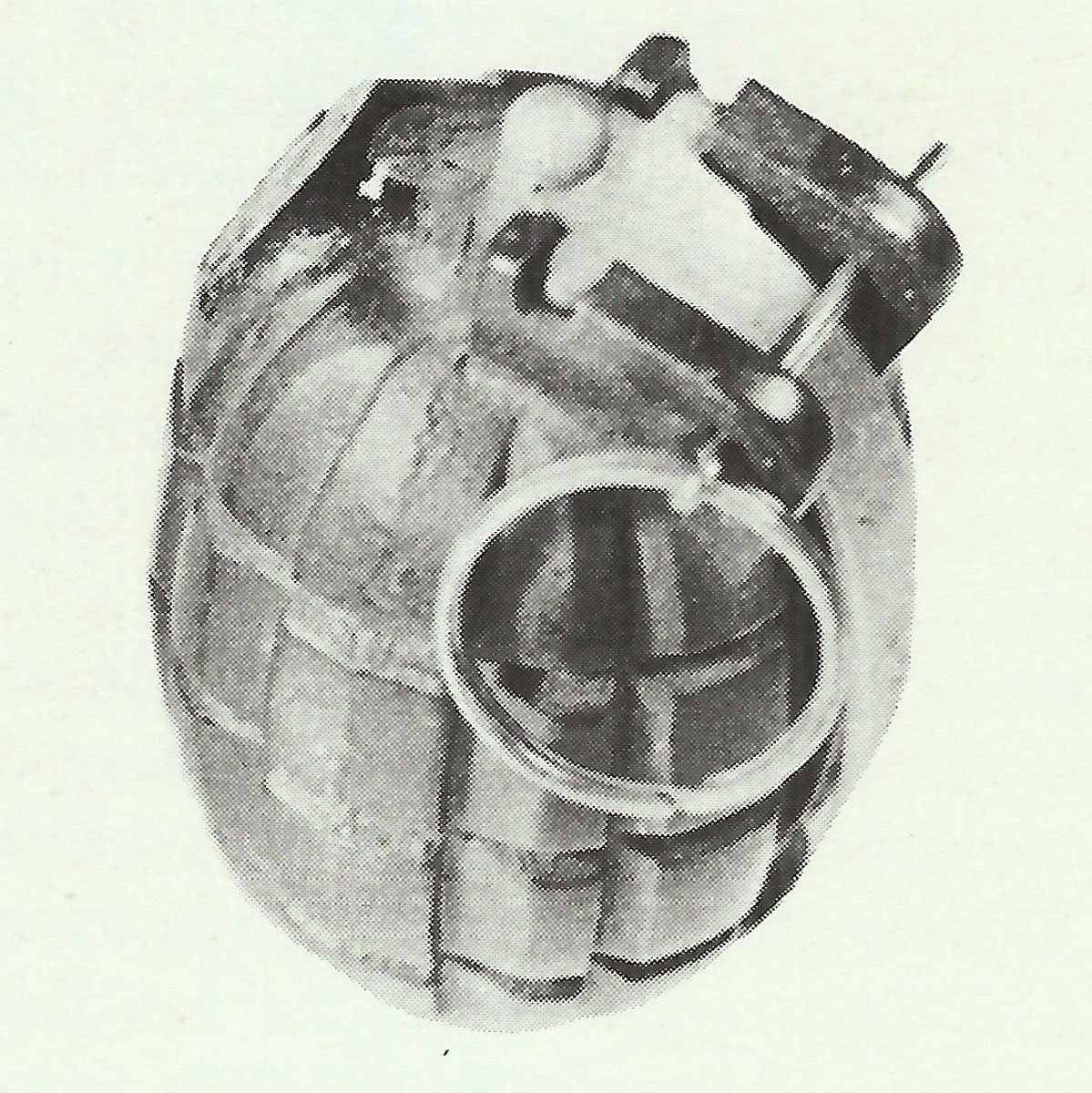
Grenade No. 69
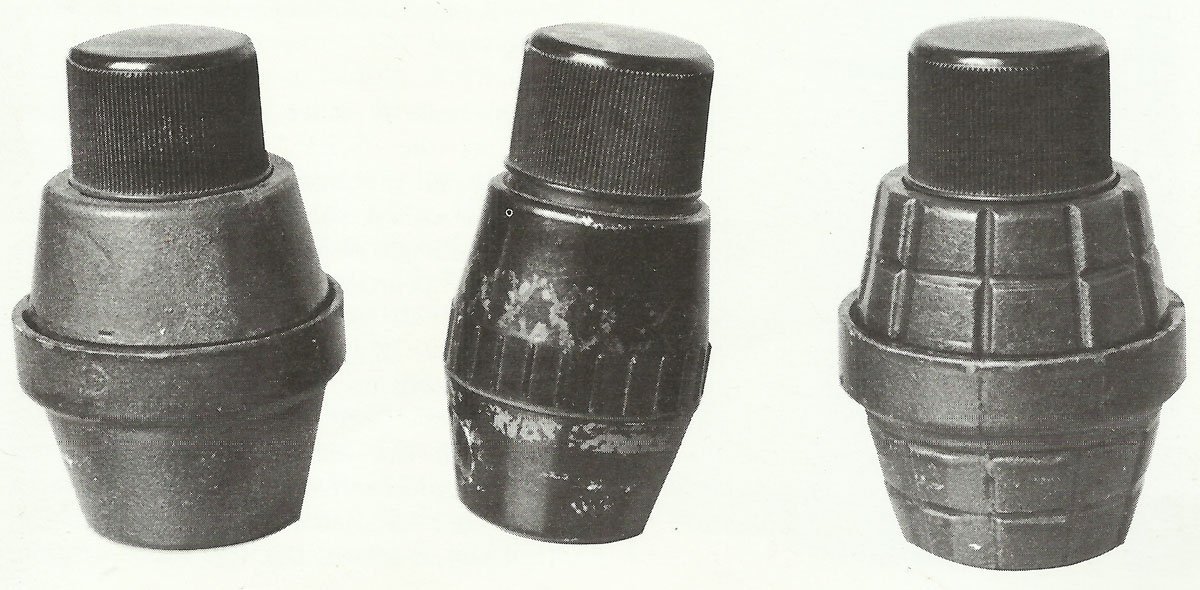
Grenade No. 69
Type: hand grenade.
History
Hand grenade No. 69 was classified as an ‘offensive’ grenade, with the noise of its explosion being worse than its fragmentation effect.
It was simply a barrel-shaped shell of black plastic filled with an explosive and had a ‘all-ways’ fuse at one end. Consequently, the effect was mainly explosive and shock, and there were very few lethal fragments inside.
Its main purpose was to be used in attack or house-to-house combat, where it could be thrown to shake and shock the enemy while the thrower followed the grenade with a sub machine gun.
Unfortunately, it was discredited as a ‘non-lethal’ grenade when it was first issued to the troops, which led to its unauthorized use as a practice grenade. It then took one or two serious accidents to convince the soldiers that it was dangerous.
The detonator was operated by a lead ball, which was held securely by a pin attached to a short piece of tape with a weight at its free end. The tape and weight were wrapped around the fuse and held in place by a safety cap.
To throw the grenade, this cap was unscrewed and removed, and when the grenade left the hand of the thrower, its movement through the air caused the tape to unwind, so that the pull of the weight pulled out the safety pin. The grenade was thus armed and when it hit the ground at any angle, the swing of the lead ball set the firing mechanism in motion and in one way or another a needle was driven into the fuse and the grenade charge detonated. Hence, the term ‘all-ways’.
The hand grenade No. 69 was subsequently used quite frequently, especially in North-Western Europe, as a supplement to other weapons for clearing buildings.
No other variant was used, but in 1944 cast-iron cloaks were tried which could be placed around the grenade to disperse deadly fragments. However, they proved to be inferior to a properly constructed defensive grenade such as the No. 36M and also had an unfavorable shape for throwing. For this reason the tests with it were stopped in July 1944.
Grenade No. 70
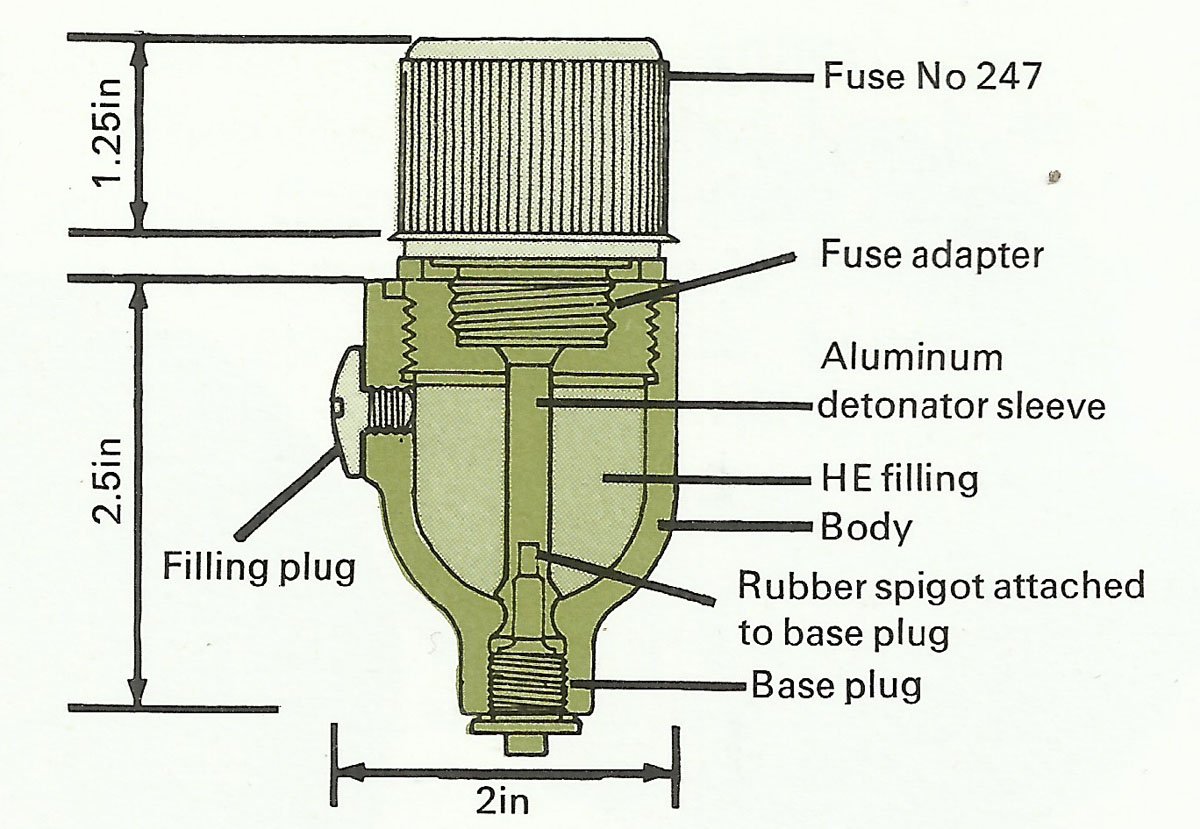
Grenade No. 70
Type: hand grenade.
History
In the case of Grenade No. 36M described at the beginning, it was already mentioned that from time to time a new design was always proposed to replace this old model. One of these young hopefuls during the Second World War was Grenade No. 70.
Three specific objections were raised against the No. 36M:
- First, its weight,
- secondly, the fact that the propagation of the detonation by the explosive charge was theoretically incorrect because the detonator was on one side,
- and thirdly, that if a soldier who dropped the grenade, either by accident or because he was wounded, the safety lever flew away and the detonator began to burn. If it was then not picked up and thrown away, there was a danger of making himself and his own men nearby the victim of his own hand grenade. In the case of a soldier who was wounded while throwing it, the chances of getting rid of a sharp grenade were quite small.
Grenade No. 70 was designed to remedy these deficiencies. In fact, it was little more than an updated version of Grenade No. 54, a design from the 1920s which had already tried to solve the same problems.
The weight was reduced to 1 lb (0.453 kg) so that the soldier could carry more and throw further. The detonator was placed centrally to allow for a better distribution of the explosion, producing a fragmentation that was as good as, if not better than, the No. 36M. For this purpose the grenade was equipped with the ‘all-ways’ fuse No. 247, which was already used on the No. 69 grenade described above.
Construction work began in 1944 and numerous types of explosives were tried out before committing to the proven Baratol. There was a lot of trouble because of the sensitivity of the detonator, but finally in early 1945 a number of the grenades were sent to the 14th Army in Burma for extensive combat testing.
They seem to have worked quite well, although according to all reports the troops still preferred the old No. 36M. In any case there were still problems with the fuse and there also seem to have been some doubts about their safety.
Therefore, the remaining grenades of the model were confiscated and destroyed in large quantities. Although the experiments continued for some time after the war, the design was finally abandoned and the hand grenade was declared obsolete.
Variants
Mark 1: Experimental model with the fuse No. 247 Mk 1, which was never issued to the troops.
Mark 2: Experimental model with fuse no. 247 Mk 2 issued to the troop.
Mark 3: Minor changes in construction, but never issued.
Grenade No. 82
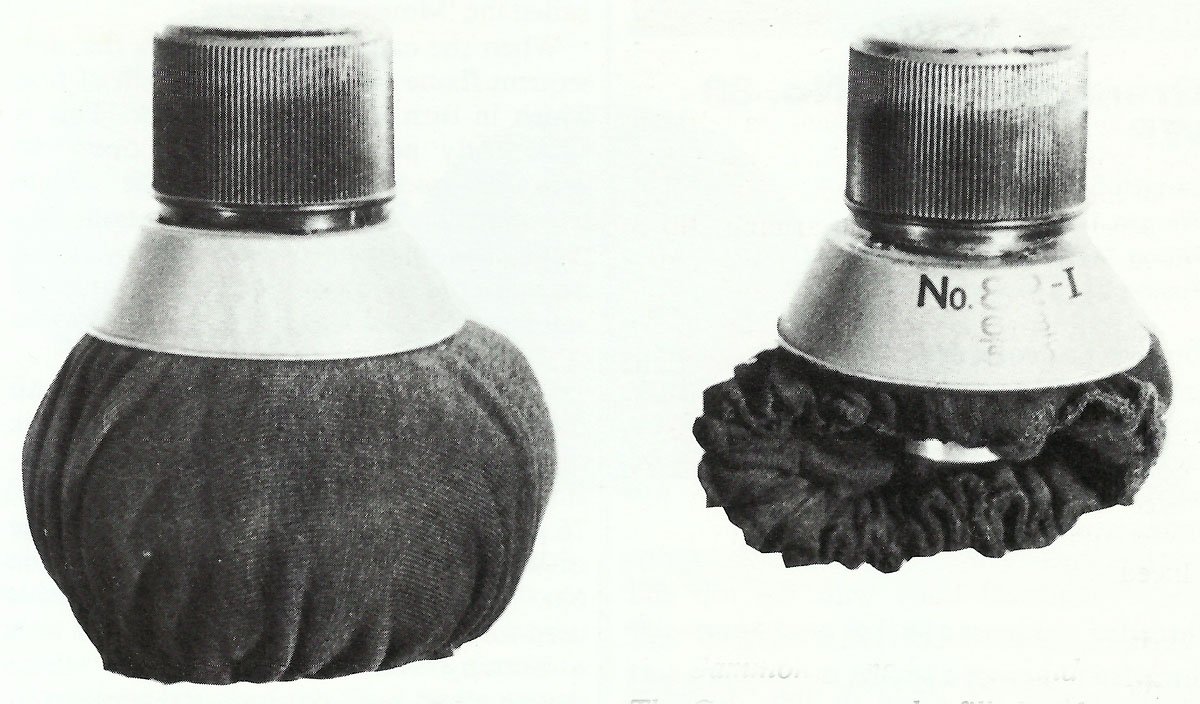
Grenade No. 82 (Gammon grenade)
Type: hand grenade.
History
The so-called ‘gammon grenade’ will go down in military history as the only officially issued ‘do-it-yourself’ grenade. The original design seems to have originated with the airborne troops and their aim was to take some weight off the paratrooper as the list of desirable equipment became longer and longer.
Among the many things he was to carry was a stockpile of plastic explosives in sticks in case blasting was required. A quick gathering of the carried sticks among the paratroopers in the landing area would gather enough explosives for detonations, since engineers or other specialists were rarely available in their drop zone.
Another desirable point was, of course, a stockpile of hand grenades for the men and so someone must have thought that a grenade was little more than a detonator with a lot of explosives underneath. Since the airborne soldiers already carried explosives with them, they could simply still get detonators, and so they could use the plastic explosives as hand grenades if necessary.
With it the grenade No. 82 was born. In its issued form it consisted of no more than an ever-present detonator attached to a cloth bag, open at the bottom and gathered with a strong elastic band. Quite a number of them could be compressed and carried in the pockets or bags of the soldier, adding only a small extra weight to his load.
When a grenade was needed, some of plastic explosives were pushed into the bag around the bottom of the detonator, the cap was removed and the whole piece thrown.
The amount of plastic explosives used depended on the requirements of the soldier: half a piece to blow away a front door or to clear a dugout, two pieces to attack a tank or any other suitable amount in between for other tasks.
The originally issued fuse had an adhesive tape 4 inch (about 10 cm) long, which removed the pin and armed the fuse practically as soon as the grenade left the hand of the thrower. But this was apparently a bit too dangerous and most of the specimens used the normal, 11.5 inch (almost 30 cm) long adhesive tape.
The name ‘Gammon’ is said to have been given because of the similarity of the filled grenade to a wrapped gammon. Beauty is mostly in the eye of the beholder.
The ‘Gammon’ seems to have been used in most airborne operations from North Africa until the end of the war. Its main applications were either as an anti-tank grenade or in urban combat. In the latter, they were particularly useful for ‘mouse-holing’, i.e. blowing holes in the connecting walls of houses to avoid having to work their way from house to house on the road when clearing up towns from the enemy.
Specifications British hand grenades
Specifications:
Specification | No. 36M | No. 69 | No. 70 | No. 82 (Gammon grenade) |
|---|---|---|---|---|
Type | hand or rifle grenade (defensiv) | hand (offensiv) | hand | 'Do-it-yourself' hand grenade |
Length | 3.75 in (9.53 cm) | 4.5 in (11.43 cm) | 3.85 in (9.78 cm) | variable |
Weight | 1 lb 11.25 oz (0.77 kg) | 13.5 oz (0.38 kg) | 1 lb (0.45 kg) | variable |
Filling | 2.5 oz (71g) Baratol | 3.25 oz (92g) Lyddite, Baratol or Amatol | Baratol | plastic explosive sticks |
Fusing | 4 or 7-second delay | Impact ('all-ways') | Impact ('all-ways') | Impact ('all-ways') |
Effective range | ? (fragmentation up to 100 yards) | ? | ? | ? |
References and literature
The Encyclopedia of Infantry Weapons of World War II (Ian V.Hogg)
Infanterie im 2. Weltkrieg (J.B.King, John Batchelor)
The Encyclopedia of Weapons of World War II (Chris Bishop)








